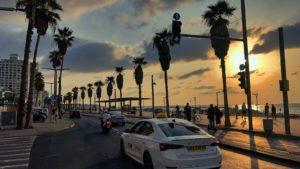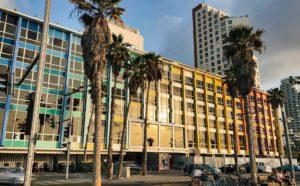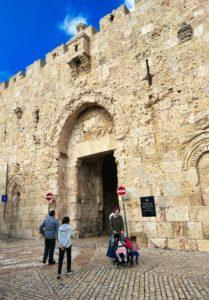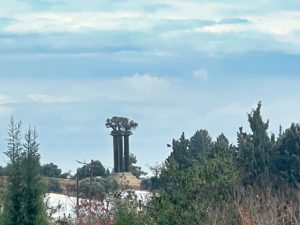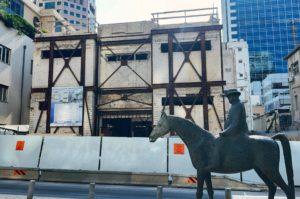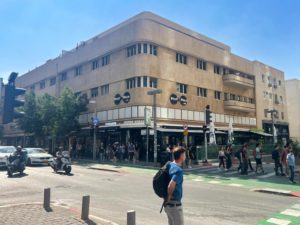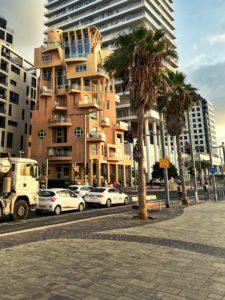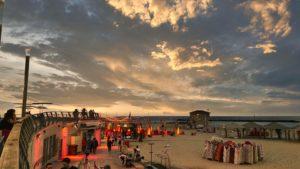Neglecting to include the city of Tel Aviv, Israel in the Bible—and, more rudely, in the Torah—seems like a major oversight to me. After all, Tel Aviv is more attractive than either Bethlehem or Jerusalem, yet those places get referenced constantly in religious tomes. Clearly, this major metropolis needed a better PR agency.
Tel Aviv Israel is an oasis of modernity in a desert of Old Testament antiquity.
At first blush, Tel Aviv, Israel looks a lot like Los Angeles. It's a big, modern city on a beach, the weather is almost always perfect, and a lot of Jewish people seem to live there.
Other similarities to Los Angeles include tons of great restaurants, a vibrant arts scene, and car-centric city planning that makes Tel Aviv a traffic-jam hellscape. There's nothing like getting behind the wheel in Tel Aviv to make you want to get out and walk.
Unlike Los Angeles, however, the city leaders here are trying to fix the problem with more transit instead of more lanes (see also, induced demand). Tel Aviv is almost European in that regard. All the city has to do, now, is work on its condescension level. Then, it'll be indistinguishable.
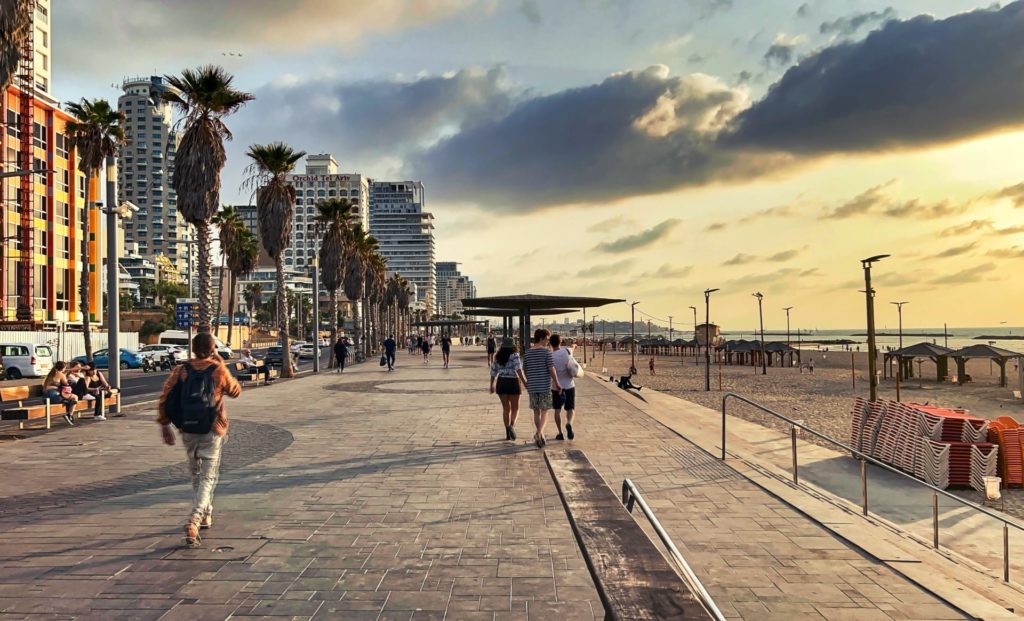
So Tel Aviv is a beach town, apparently. Who knew?
We arrived in Tel Aviv, Israel around 5pm, or what the locals call “sunset.” I don't know if it was the time of year we visited, or if the city hadn't paid its solar bill but, by the time our US$50 cab driver arrived at PrimaCity Hotel, it was already dark outside.
Needing to eat, we walked along Gordon Beach. We stopped in Stolero, an outdoor bar with a confusing menu and an even more confused staff. The food was pretty good, but the waiters were flighty and forgetful. It took forever before anyone noticed us running out without paying the bill.
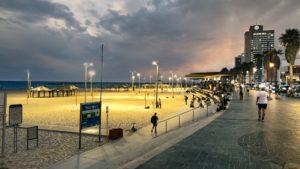
On the walk back to our hotel, we passed an area of the beach lit by powerful flood lamps. Lights that illuminated the surrounding sand like the surface of the f@#&ing sun. After letting our eyes adjust to the blinding lights, we could make out athletic, young people playing night beach volleyball.
Evidently, it's not enough for hot people around here to flaunt their youth and fitness during the daylight hours, they have to do it after dark, too. We watched for a few minutes and then became exhausted and had to go to bed.
Visit Tel Aviv before everyone gets turned into pillars of salt.

I'll be honest, I really didn't know what to expect when we first made plans to visit Tel Aviv. I didn't know if the place was cold and snowy, hot and humid, in the mountains or by the beach. I guess what I'm saying is that I packed all wrong.
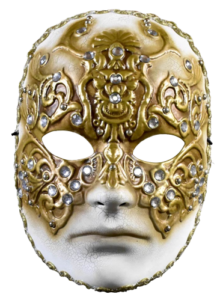
It turns out that Tel Aviv is one of the Middle East's party capitals. Had I known, I would've brought more mesh t-shirts and ass-less leather lederhosen. Instead, I spent the whole time there dressed like a loser tourist. It's no wonder I didn't get invited to a single after-hours rave or Eyes Wide Shut sex orgy.

That was really disappointing, too, because the sex orgies in Tel Aviv must be amazing. Of course, I'm making that assumption based on appearances. Specifically, the appearance of all the suuuuuuper hot young people who perpetually exercise along the beach in workout-wear. It borders on annoying.
Be honest, “Sheckle” sounds like money the Flintstones used.
This town wasn't always called Tel Aviv.
![[Roads leading into a small town]. Brady album, p. 123](https://www.crosbyreport.com/wp-content/uploads/2022/11/DP70817-300x272.jpg)
Back in 1909, the area where Tel Aviv now sits was nothing but a couple of acres of beachfront sand and scrub on the outskirts of Jaffa. It was soon transformed into a tiny Jewish settlement named Ahuzat Bayit (roughly, “Homestead”).

The town's founders— inspired by modern European cities—wanted the area to one day become Israel's shining Camelot-by-the-sea. Only a lot less WASPy.
The community slowly attracted more and more Jewish people over time. But immigration really picked up after Hitler invaded Poland, because everyone knew Adolf hadn't gone there just for the Polish pierogies.
Not everyone who migrated here was Jewish.

The area now known as the Sarona District is home to many of Tel Aviv's high-tech companies as well as the Sarona Market, Israel's largest—and bougiest—indoor food market. So if you're agoraphobic, hate noise, or get lost easily, you might want to find a quiet café somewhere, because the Sarona Market is manic-aggressive.
Yet the area was once a village owned and occupied by German Templars, a generally peaceful group of religious farmers much like the Amish or Mennonites. But upon Hitler's rise to power, this messianic Templar community went from getting in good with God to getting onboard with the Third Reich. The Templars obviously couldn't “read the room,” because flying Nazi flags in Israel got them run out of town faster than a dog at a cat conference.
If you want something done right, do it yourself.
Once WWII ended, the Jewish people were understandably reluctant to rely on other nations' promises not to suddenly start rounding them up. So they pushed for their own sovereign nation. A land where Jews couldn't be persecuted or oppressed at another country's whims.
Through self-government, the reasoning went, the Jewish people could control their own destiny. They could shape their own future, steer their own course, and oppress their own people by electing an overwhelmingly male, ultra-religious, and right-wing government.
In 1948, Israel declared the establishment of a Jewish state. Unfortunately, this was news to the neighboring Arab countries, who weren't exactly cool with that decision. In fact, they were vehemently against that decision. So vehemently that they involved tanks.
After a 10-month-long war, Israel got its promised land (and a bit more—don't ask). They set up a government, funded a military, and took the reins of their own state. As word got around, Ahuzat Bayit's population continued to grow.
Immigrants brought Moderne, Brutalism, and Bauhaus.
Not surprisingly, Ahuzat Bayit soon became a magnet for Jewish people emigrating from Europe, as well as other countries. These new Jewish citizens brought new ideas and influences to the growing town.
For example, in the 1930s, German Jews brought “modern” architecture designs with them. The folks around here couldn't get enough of the International Style, and they went nuts designing 4,000 buildings that now look super-retro.
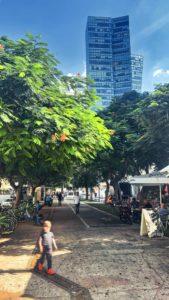
The locals had to modify the look a bit, however, for the warmer Mediterranean climate. Smaller windows and lighter paint colors kept the interiors cool by blocking and reflecting the constant desert sunlight.
These monochrome structures later inspired its nickname, “The White City.” (I had wrongly assumed the name was a reference to the tons of cocaine locals must have done in the '80s.)
This influx of new architecture and design began making Ahuzat Bayit the international city its founders hoped it would become. There was just one problem. (Okay, there were actually lots of problems, but there was one problem city leaders thought they could solve).
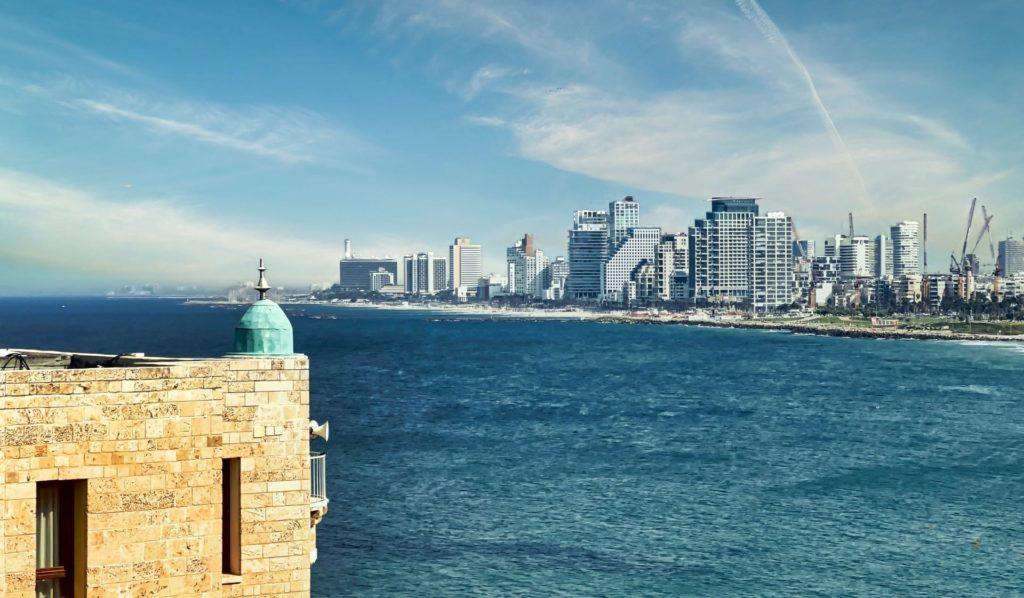
We can all agree that Ahuzat Bayit was a terrible name.
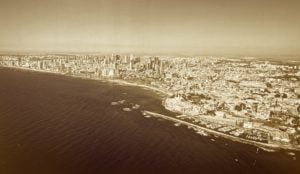
The city was growing so much that, by the middle of the century, it had annexed the Old City of Jaffa in both territory and terminology. So, to better represent this new metropolis, Ahuzat Bayit formally renamed itself as “Tel Aviv-Yafo” in August 1950.
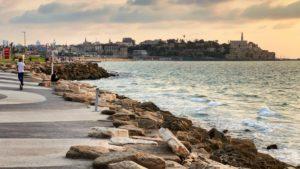
The name means “old and new,” where Jaffa is the “Tel” (or old) and Ahzut Bayit was the “Aviv” (or new). Instantly, everyone was onboard and enthusiastic about the big change—even the Arabs living in Jaffa loved it! (Do not Google that.)
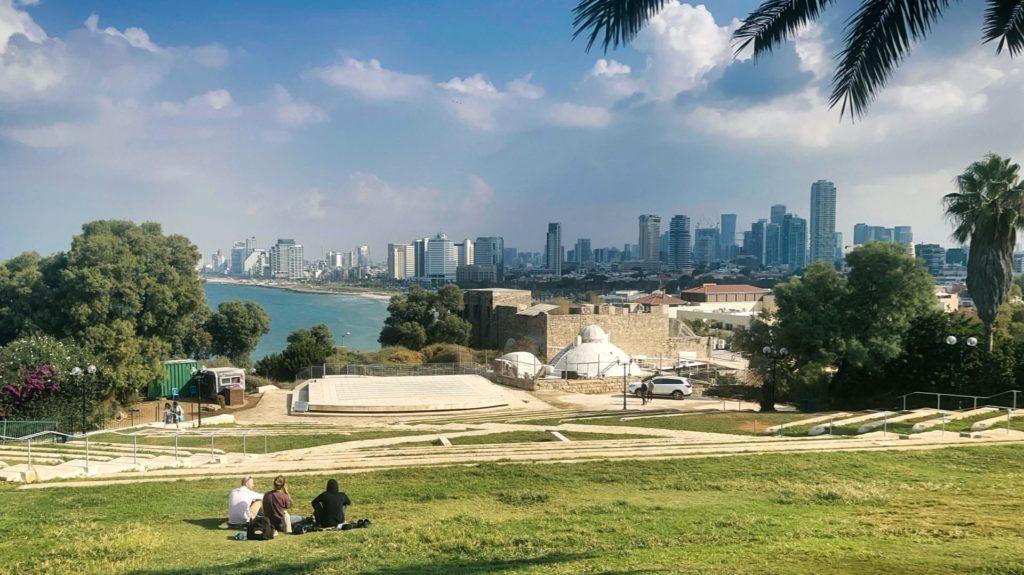
If you love LA, you might like Tel Aviv better.
Despite its modest beginnings, Tel Aviv is now the second-largest city in all of Israel. It also has the largest economy per capita in the Middle East and, certainly, the most scantily clad hotties in the entire Holy Land. [citation needed]
In short, the city of Tel Aviv is crushing it.
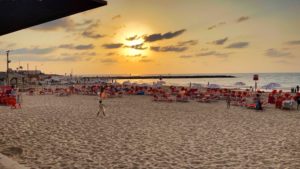
Oh, sure, the city has its share of problems—every city does. But Tel Aviv's issues didn't stop us from having a good time while we were there. Ancient religious authors may have passed over Tel Aviv like the tenth plague, but fans of cosmopolitan, urban environments definitely shouldn't.

